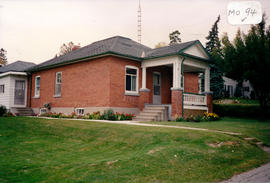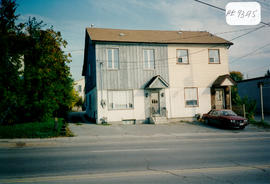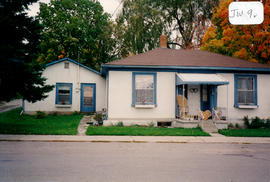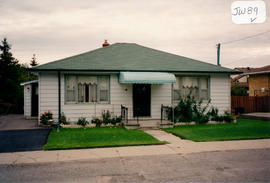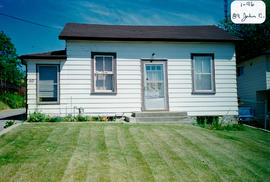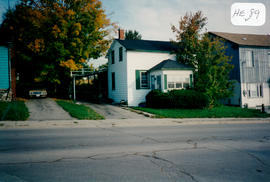- CA BWGPL GJ-HB-2017-04-07-10
- Item
- 1995
Part of George Jackson fonds
The house located at 95 Moore Street on the southeast corner of Moore and Letitia (later Frederick) Streets was built pre-1900 in the Ontario Vernacular Cottage style. George Ogilvie (a tailor) once lived here. A three-foot high, picket fence originally ran along the east side of Moore Street from this corner to Joseph Street.
The one-storey, three-bay cottage has a symmetrical façade, a rectangular plan, and a centre hall. A box hall was typical for this style. It also has a one-storey, rear addition. There is a shallow-pitched, gable roof on the main portion and a shed roof on the rear addition. The covered, front porch has a gable roof supported on brackets. A simple entrance is raised above grade level and it has a single door in a rectangular opening. There are small, single windows to the primary rooms on each side of the porch. The porch stairs are a recent addition and the double-hung windows are also not original. Windows are set into simple, rectangular openings and have plain, wood surrounds and sills. Wood frame construction is covered with insulbrick (asphalt) and aluminum siding. The original cladding was probably wood cove siding. There is a stone-rubble foundation. According to the 2000 inventory, this modest cottage probably had few decorative details originally. It also notes that other than the building’s form, few existing building elements appear to be original. (1, 2, 3)
George Jackson


